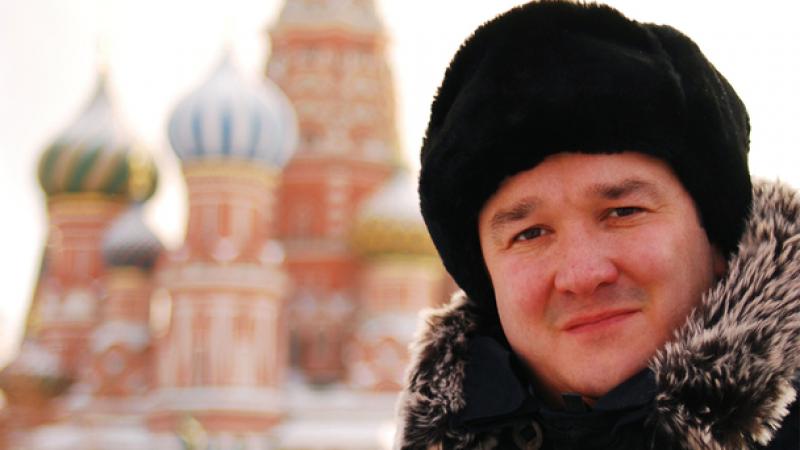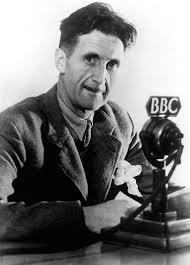Strange Days - Cold War Britain, BBC Two | reviews, news & interviews
Strange Days - Cold War Britain, BBC Two
Strange Days - Cold War Britain, BBC Two
Dominic Sandbrook finds enemies within and without in post-World War II Britain

The images really do say it all in Strange Days – Cold War Britain. It’s a style of documentary making which puts archive material in first place, ahead even of presenter Dominic Sandbrook, who’s the sole screen presence here (no interviews, no talking heads). We can only wonder exactly how this challenging mêlée of material came together, but can be sure that archive producer Stuart Robertson had every bit as much input as director Rebecca Templar.
This first episode of three, “Red Dawn”, could be subtitled, “The Russians are coming!”, though it’s incidences of Soviet soft power rather than brute force that bookend it. Strange Days started with one Russian invasion, that of Moscow’s Dynamo football team in November 1945, and ended a decade later with the Bolshoi ballet’s epoch-making 1956 tour to London. The opening match with Chelsea had thousands turned away from Stamford Bridge (the result, fittingly, was a 3-3 draw), while ballet-lovers queued for days for Covent Garden tickets.
Whether it was advances in space flight, or in kitchen design, that decided the Cold War
This suggests a greater level of popular sympathy among ordinary Britons for the wartime ally whose armies had suffered such catastrophic losses than you might expect from anything we saw in Sandbrook’s film. (The Dynamo players in fact came to London with no hotel rooms reserved and were expected to stay in barracks, and hundreds of Londoners rung in to offer accommodation). On the ideological front, too, it was only the 1956 invasion of Hungary, shown here in parallel with the Bolshoi in London, that saw members of the Communist Party of Great Britain handing in their cards in droves.
Certainly a figure like Hewlett Johnson, the “Red Dean” of Canterbury, seen meeting Stalin (set to “Mad About the Boy”) in 1945 and then receiving the second International Stalin Peace Prize in 1951 (the first had gone to Pablo Picasso, so Johnson was in august company) looks worse than foolish with the hindsight of history. But then – at the risk of repeating the old Soviet habit of answering one accusation from the West with a qualifying riposte – Joseph McCarthy and his House Committee on Un-American Activities, also in evidence in the film, has hardly gone down among posterity’s wise men, either.
 Sandbrook is readier to condemn than praise – though, to paraphrase Winston Churchill, who inevitably featured here with his Fulton speech (introducing us to the phrase “Iron Curtain”), many of those we saw here had a lot to be condemned for. However, even the fleeing spies Guy Burgess and Donald Maclean get a posthumous verdict that they were probably “true believers”, a more generous evaluation than many would accord them. If the accolade of wisdom is granted to anyone, it's to George Orwell (pictured right) who minted the phrase “Cold War”, and in his last days surrendered the names of past associates who he thought could become future enemies of his country.
Sandbrook is readier to condemn than praise – though, to paraphrase Winston Churchill, who inevitably featured here with his Fulton speech (introducing us to the phrase “Iron Curtain”), many of those we saw here had a lot to be condemned for. However, even the fleeing spies Guy Burgess and Donald Maclean get a posthumous verdict that they were probably “true believers”, a more generous evaluation than many would accord them. If the accolade of wisdom is granted to anyone, it's to George Orwell (pictured right) who minted the phrase “Cold War”, and in his last days surrendered the names of past associates who he thought could become future enemies of his country.
Sandbrook’s style is closest to that of the feuilletonist, in the dictionary definition of “usually reflexive, humourous, ironic and above all very subjective in drawing conclusions, assessments and comments”. Next week has him considering whether it was advances in space flight, or in kitchen design, that decided the Cold War. Worth sticking with.
Add comment
The future of Arts Journalism
You can stop theartsdesk.com closing!
We urgently need financing to survive. Our fundraising drive has thus far raised £49,000 but we need to reach £100,000 or we will be forced to close. Please contribute here: https://gofund.me/c3f6033d
And if you can forward this information to anyone who might assist, we’d be grateful.

Subscribe to theartsdesk.com
Thank you for continuing to read our work on theartsdesk.com. For unlimited access to every article in its entirety, including our archive of more than 15,000 pieces, we're asking for £5 per month or £40 per year. We feel it's a very good deal, and hope you do too.
To take a subscription now simply click here.
And if you're looking for that extra gift for a friend or family member, why not treat them to a theartsdesk.com gift subscription?
more TV
 Murder Before Evensong, Acorn TV review - death comes to the picturesque village of Champton
The Rev Richard Coles's sleuthing cleric hits the screen
Murder Before Evensong, Acorn TV review - death comes to the picturesque village of Champton
The Rev Richard Coles's sleuthing cleric hits the screen
 Black Rabbit, Netflix review - grime and punishment in New York City
Jude Law and Jason Bateman tread the thin line between love and hate
Black Rabbit, Netflix review - grime and punishment in New York City
Jude Law and Jason Bateman tread the thin line between love and hate
 The Hack, ITV review - plodding anatomy of twin UK scandals
Jack Thorne's skill can't disguise the bagginess of his double-headed material
The Hack, ITV review - plodding anatomy of twin UK scandals
Jack Thorne's skill can't disguise the bagginess of his double-headed material
 Slow Horses, Series 5, Apple TV+ review - terror, trauma and impeccable comic timing
Jackson Lamb's band of MI5 misfits continues to fascinate and amuse
Slow Horses, Series 5, Apple TV+ review - terror, trauma and impeccable comic timing
Jackson Lamb's band of MI5 misfits continues to fascinate and amuse
 Coldwater, ITV1 review - horror and black comedy in the Highlands
Superb cast lights up David Ireland's cunning thriller
Coldwater, ITV1 review - horror and black comedy in the Highlands
Superb cast lights up David Ireland's cunning thriller
 Blu-ray: The Sweeney - Series One
Influential and entertaining 1970s police drama, handsomely restored
Blu-ray: The Sweeney - Series One
Influential and entertaining 1970s police drama, handsomely restored
 I Fought the Law, ITVX review - how an 800-year-old law was challenged and changed
Sheridan Smith's raw performance dominates ITV's new docudrama about injustice
I Fought the Law, ITVX review - how an 800-year-old law was challenged and changed
Sheridan Smith's raw performance dominates ITV's new docudrama about injustice
 The Paper, Sky Max review - a spinoff of the US Office worth waiting 20 years for
Perfectly judged recycling of the original's key elements, with a star turn at its heart
The Paper, Sky Max review - a spinoff of the US Office worth waiting 20 years for
Perfectly judged recycling of the original's key elements, with a star turn at its heart
 The Guest, BBC One review - be careful what you wish for
A terrific Eve Myles stars in addictive Welsh mystery
The Guest, BBC One review - be careful what you wish for
A terrific Eve Myles stars in addictive Welsh mystery
 theartsdesk Q&A: Suranne Jones on 'Hostage', power pants and politics
The star and producer talks about taking on the role of Prime Minister, wearing high heels and living in the public eye
theartsdesk Q&A: Suranne Jones on 'Hostage', power pants and politics
The star and producer talks about taking on the role of Prime Minister, wearing high heels and living in the public eye
 King & Conqueror, BBC One review - not many kicks in 1066
Turgid medieval drama leaves viewers in the dark
King & Conqueror, BBC One review - not many kicks in 1066
Turgid medieval drama leaves viewers in the dark
 Hostage, Netflix review - entente not-too-cordiale
Suranne Jones and Julie Delpy cross swords in confused political drama
Hostage, Netflix review - entente not-too-cordiale
Suranne Jones and Julie Delpy cross swords in confused political drama

Comments
You just have to remember